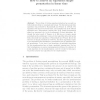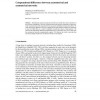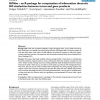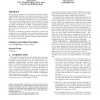1090 search results - page 5 / 218 » The Equivalence between Biology and Computation |
RECOMB
2007
Springer
14 years 10 months ago
2007
Springer
The problem of Sorting signed permutations by reversals is a well studied problem in computational biology. The first polynomial time algorithm was presented by Hannenhalli and Pev...
NIPS
1998
13 years 11 months ago
1998
Symmetrically connected recurrent networks have recently been used as models of a host of neural computations. However, biological neural networks have asymmetrical connections, at...
ASM
2010
ASM
14 years 6 months ago
2010
ASM
A natural encoding of synchronous message exchange with direct wait-control is proved to be equivalent in a distributed environment to a refinement which uses semaphores to implem...
BMCBI
2007
13 years 9 months ago
2007
Background: With the increased availability of high throughput data, such as DNA microarray data, researchers are capable of producing large amounts of biological data. During the...
CCS
2008
ACM
13 years 11 months ago
2008
ACM
Many security properties are naturally expressed as indistinguishability between two versions of a protocol. In this paper, we show that computational proofs of indistinguishabili...




